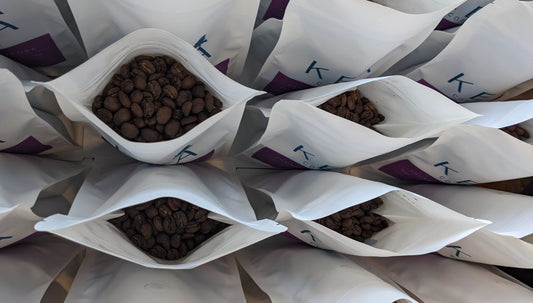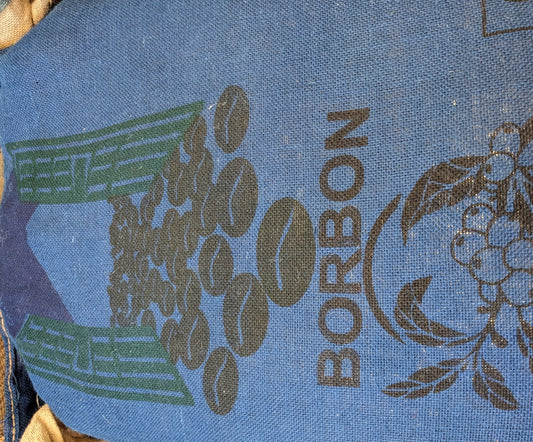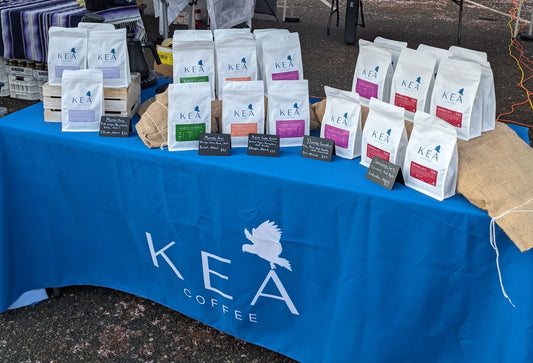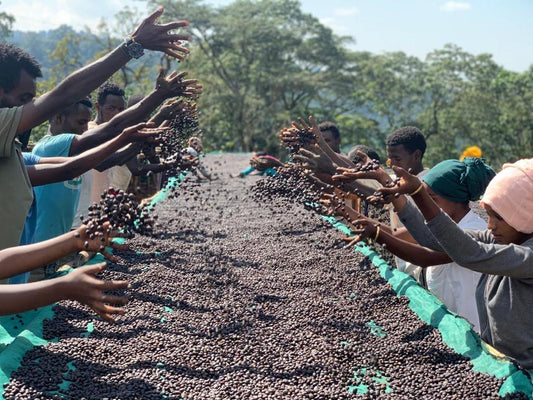Sidamo (or Sidama - more on that later!), is one of Ethiopia's major coffee growing regions.
Today, we'll dig into the regions rich coffee history, take a look at the common processing techniques and varietals you can find across Sidamo and cover some common flavour notes and characteristics of Sidama coffee.
But first...
Is it Sidamo or Sidama?
There's a lot of confusion out there about this one.
And it's not really surprising.
The growing areas and boundaries in Ethiopia are quite complex, and lines have been redrawn a couple of times in recent history for various political reasons.
Pre 1995, Sidamo was a designated province in Ethiopia, covering the Southern part of Ethiopia and most of the border with neighbouring Kenya.
Then, in 1995, the new Constitution Of Ethiopia enforced newly defined regional states. This meant that the old region of Sidamo was split between the 2 newly created regional states of Oromia and the Southern Nations, Nationalities, and Peoples (SNNPR).
5 years later, on June 18th 2020, a small portion of the new Southern Nations, Nationalities and Peoples state was split off following a referendum on independence by the local people. This newly created region is what we now call the Sidama region.
Some people think that Sidama and Sidamo are 2 different names for the same region, but actually that's not completely accurate.
The area we now call Sidama was once a part of Sidamo. But the original Sidamo region covered a much larger area.
And just to add an extra layer of confusion to the whole thing...
The Ethiopian Coffee Exchange also maintain a map of coffee growing regions. Due to the recent changes in where the political maps are drawn, the ECX maps don't exactly match with the new political maps.
The Sidamo coffee growing region as defined by the ECX, covers all of the Sidama region, parts of the SNNPR and parts of Oromia.
Stats and Facts
- Sidama has 3 main coffee growing areas: Bensa, Aroresa and Chire.
- Over 40% of all washed Ethiopian coffee comes from Sidama.
- Sidama is rich in water resources, with washed coffee processing being the traditional and still the most popular processing method.
- Fichchee - the Sidama peoples new year celebration, is the biggest cultural holiday in the region.
A brief history of coffee in Sidama
The region has a long and complicated history, which is another topic for another day, but in 2020 the Sidama Region was formally designated following a peoples vote for increased autonomy.
But the areas coffee history of course goes back way before then.
We all know that Ethiopia is the birthplace of coffee... but did you know that the Sidamo region is very likely the area where the first coffee plants evolved?
In the years since then, Sidamo has developed a reputation for producing consistently excellent coffees.
As with most coffee production across Ethiopia, the vast majority of the coffee grown in Sidamo is grown by very small farms, often only a few acres each.
In 2001, the Sidama Coffee Farmers Co-Operative Union (SCFCU) was formed, to help unite some of the regions small holder farmers together.
Fast forward to today and the SCFCU now represents over 80,000 smallhold farmers across the Sidama region.
Increasingly, the SCFCU is now starting to promote the sale and export of coffee directly to foreign buyers. This of course helps to shorten the total supply chain and get more of the price paid back to the farmers.
Sidama's ideal terrain and climate
Sidama is the 2nd smallest regional state in Ethiopia, but it has some of the best terrain and climate in the country for coffee production.
(Don't get this confused with the larger surrounding Sidamo growing region though, as defined by the ECX, which is actually the largest coffee growing region in Ethiopia!)
The terrain is mostly comprised of highlands with impressively high elevations. Many farms in Sidama are above 2000masl.
This high elevation means that the coffee cherries take longer to develop.
With slower development, more interesting and complex flavours have a chance to form and the beans are denser.
Higher density also allows specialty coffee roasters like us to roast Sidama beans faster and more aggressively, preserving more of the coffees unique characteristics.
Common processing techniques
Traditional washed processed coffees still run the roost in Sidama, with many of the areas small hold farmers staying with the tried and tested.
The Sidama region has relatively good amounts of water resources, so washed processing has always been the preferred method throughout much of the region.
In recent years though, some Sidama farmers and producers are starting to experiment and push the boundaries when it comes to coffee processing.
Nguisse Nare is one of those Sidama coffee farmers who are starting to experiment with natural processed coffees. We did a deeper dive on Nguisse's story here and we also have a very small quantity of one of his lots available here if you're interested in checking out a fantastic natural processed Sidama.
What does Sidama coffee taste like? Common flavour profiles of Sidama coffee.
Most of the washed coffees coming out of Sidama are usually very bright, super clean and with higher acidity.
Expect to see lots of citrus, berries, maybe some light stone fruits like peaches, and potentially some delicate floral notes.
As with everywhere in Ethiopia, the thousands of different heirloom varietals being grown will often make for really complex coffees.
This is especially true here, and Sidama coffees do tend to have higher complexity, lots of acidity and be well balanced.
Sidama coffee Vs Yirgacheffe
Sidama and Yirgacheffe are actually neighbours, and like most neighbours there's inevitably some amount of rivalry.
Yirgacheffe coffee is so well known and sought after that it is now separated and marketed as its own region.
Although Yirgacheffe has the branding edge and is the better known coffee growing region, the truth is that coffees from these two regions are often very similar.
What varietals are grown in Sidama?
In Sidama, just like all across Ethiopia, Heirloom varietals account for most of the coffee produced for export.
Increasingly though, more and more work is being done to identify and document the countless varietals that can be found growing here.
You can read more about the work being done to study and document the thousands of individual varietals in Ethiopia in our long Heirloom varietals guide here.
The short version is that we're slowly seeing a shift away from the generic "Heirloom" label and towards coffees that are actually identified, labelled, and marketed as their own distinct varietal.
Probably some of the most commonly found Sidama coffee varietals include 74110, 74112 and 74158, but it's still more common to find lots simply labelled Heirloom.
Ready to try out some Sidama coffees?
We still have very limited supplies of this awesome Natural from Nguisse Nare available, with easy free shipping too for Canada and the US.
Or try out our Explore: series and compare 3 amazing Naturals from different parts of Ethiopia.





